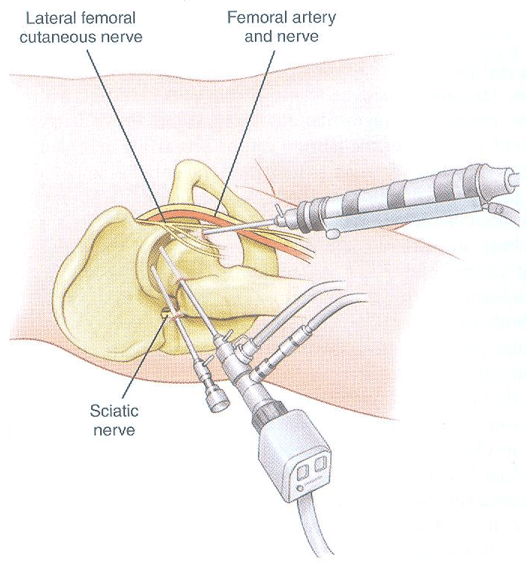-
Mon - Sat
08:00am - 08:00pm

Hip Arthroscopy is a minimally invasive surgical procedure used to investigate, diagnose and treat a hip disorder that fails to respond to physiotherapy, medication or other non-surgical treatments. This procedure provides a surgeon with a quick, easy and clear view of the inside of the hip.
Hip Arthroscopy is usually performed in order to investigate and relieve persistent hip pain, swelling, clicking, catching, instability or ‘giving way’ of a hip joint. This is an increasingly more common orthopaedic procedure provided in A+OSM Center now-a-days, especially for the younger patient with hip problems.
The majority of Arthroscopies are performed on candidates between the age range of 20 and 45 years in order to investigate and treat sports injuries, work related injuries, arthritis or general inflammation and ‘wear and tear’.
A Hip Arthroscopy can be performed under General Anesthesia (you will be asleep), Epidural or Regional Anesthesia (you will be awake). The procedure usually takes only a short amount of time to perform if the injury to the hip is of a minor nature (approximately 30 minutes), although repair of more complex injuries can take much longer. Most Arthroscopy procedures are provided on a Day-Case basis.
The nice part about hip arthroscopy is that it is much less invasive than traditional hip surgery. This means:
Common corrective procedures performed during an Arthroscopy are:

Following a progressive improvement of pain control and mobility ,patients are normally discharged home four to six hours after their surgery. By the time the required level of recovery is achieved for discharge, patients are normally wearing only a simple wound dressing over their incisions, eating and drinking normally, walking with minimal support and taking only mild analgesia (pain killers) to control any pain.
Over the next six weeks patients will be expected to work on improving their own mobility and range of movement through dedicated and progressive physiotherapy and by increasing their daily activity and walking distances. Your Consultant Surgeon will then assess your condition and joints range of movement after one week,3 weeks,6 weeks and then again after three months to evaluate how successful the Arthroscopy has been.